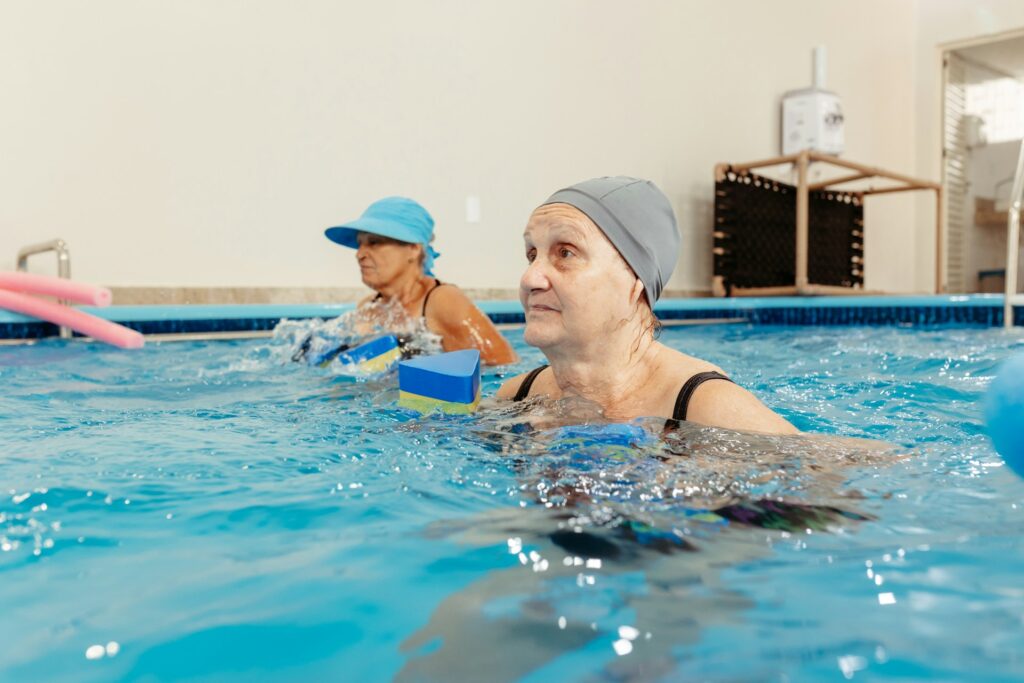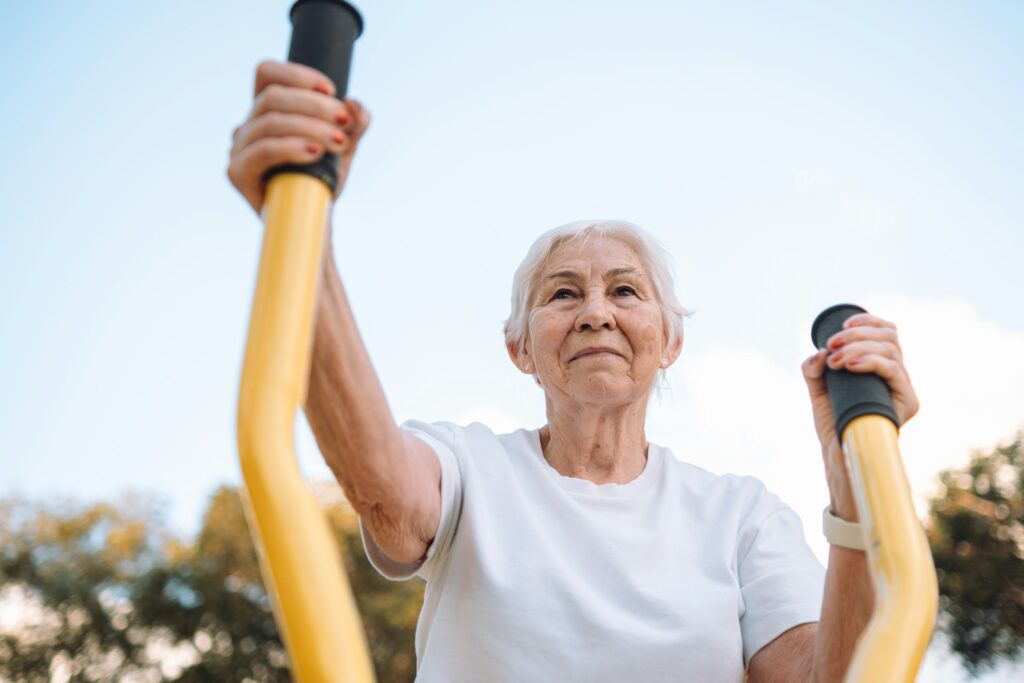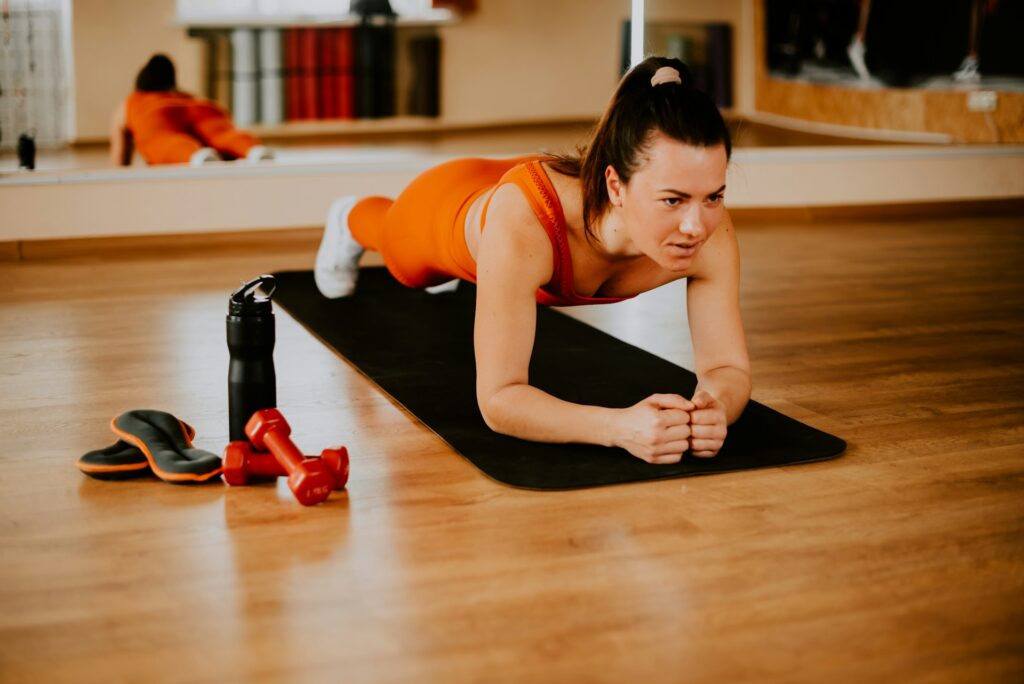Muscle and joint pain can be a significant hindrance to daily life, making even simple tasks seem daunting. Whether it’s due to a chronic condition, overexertion, or the natural aging process, finding ways to stay active while managing discomfort is crucial. Exercise, counterintuitive as it may seem, can be a potent remedy.
But not just any exercise will do; it’s about choosing the right type and intensity to help alleviate pain rather than exacerbate it. With that in mind, here are some gentle yet effective exercises designed to keep you moving and reduce muscle and joint pain.
Water Workouts: Buoyancy For Better Movement
Aquatic exercises are a godsend for those with joint and muscle pain. The water’s buoyancy reduces the impact on joints, making movements smoother and less painful. Try these water-based activities:
- Aqua Jogging: Mimic the motion of running in the shallow end of the pool. The water resistance adds a gentle strength component without the harsh impact of traditional jogging.
- Water Aerobics: Join a class or follow a video at home. The rhythmic movements improve joint flexibility and can be tailored to your comfort level.
- Swimming: Opt for strokes that feel comfortable and keep your movements smooth. The backstroke and breaststroke are often recommended for those with joint issues.

Stretching: The Foundation Of Flexibility
Stretching is essential for maintaining flexibility and can provide relief from muscle tightness and joint pain. Focus on gentle stretches, holding each for 15-30 seconds:
- Yoga: Gentle yoga styles like Hatha or Iyengar can increase flexibility and strength with minimal stress on the joints.
- Tai Chi: This ancient martial art promotes balance, flexibility, and calm, with slow, flowing movements that are perfect for all fitness levels.
- Dynamic Stretching: Incorporate slow, controlled leg swings, arm swings, and torso twists to warm up your muscles and joints before engaging in more strenuous activities.

Strength Training: Building Supportive Muscles
Strengthening the muscles around painful joints can provide better support and reduce pain. Use light weights or resistance bands, and focus on high repetitions with low resistance:
- Leg Lifts: Great for strengthening the thigh muscles, which support the knees.
- Arm Curls: Using light dumbbells or a resistance band, these can help strengthen the biceps and improve elbow joint stability.
- Wall Push-Ups: A less intense version of traditional push-ups that can help build shoulder and chest strength without putting too much pressure on the wrists and elbows.
Low-Impact Cardio: Keep The Heart Pumping
Cardiovascular exercise is important for overall health but can be challenging with muscle and joint pain. Low-impact options can get your heart rate up without the harsh impact:
- Walking: Perhaps the simplest form of exercise, walking can be easily adjusted to your comfort level. Use walking poles for added stability and upper body engagement.
- Cycling: Stationary or outdoor cycling is gentle on the joints, especially the knees and hips, while providing a good aerobic workout.
- Elliptical Trainer: This machine offers a good cardio workout with minimal joint stress, as the feet never leave the pedals.

Pilates: Core Strength & Stability
Pilates focuses on controlled movements that strengthen the core muscles, which are vital for supporting the spine and maintaining good posture:
- The Hundred: A breathing exercise that also works the core and improves circulation.
- Pelvic Tilts: These can help strengthen abdominal muscles and relieve lower back pain.
- Leg Circles: A low-impact way to strengthen the hips and improve range of motion.
Isometric Exercises: Strength Without Movement
Isometric exercises involve contracting your muscles without visible movement of the joint. As Toc Docs, an orthopedic clinic in Knoxville, TN, tell us, these exercises can be particularly beneficial for those with joint pain, as they allow for muscle engagement without straining the joints:
- Wall Sits: Stand with your back against a wall, then slide down into a seated position with your knees at a 90-degree angle. Hold this position for 20-30 seconds. This exercise strengthens the quadriceps without putting pressure on the knees.
- Planks: Lie face down, then lift your body so you’re supported by your forearms and toes, keeping your body in a straight line. Hold this position for as long as you can maintain good form. Planks are excellent for building core strength, which can help alleviate lower back pain and even combat heart disease.

Balance Training: Stability & Coordination
Improving your balance can reduce the risk of falls and the subsequent strain on your muscles and joints. Balance exercises can also strengthen the muscles that help stabilise your joints:
- Heel-to-Toe Walk: Place the heel of one foot just in front of the toes of the opposite foot each time you take a step. Your heel and toes should touch or almost touch. Focus on a spot ahead of you to keep steady as you walk 20 steps.
- Single-Leg Stands: Stand on one leg while holding onto a sturdy chair or counter if needed. Hold the position for 10-30 seconds, then switch to the other leg. This exercise strengthens the leg muscles and engages the core, improving overall stability.
Some Simple Pointers For Exercising With Muscle & Joint Pain
- Warm-Up Properly: Always start with a gentle warm-up to prepare your muscles and joints for exercise.
- Listen to Your Body: If an exercise causes pain, stop immediately. Pain is a signal from your body to take it easy.
- Stay Consistent: Regular, gentle exercise can help reduce pain over time, but it’s important to be consistent.
- Cool Down: Finish your workout with a cool-down period and some additional stretching to prevent stiffness.
- Consult a Professional: Before starting any new exercise regimen, especially if you have chronic pain, consult with a healthcare provider or a physical therapist. This is particularly important for individuals with specific inflammatory conditions like rheumatoid arthritis, ankylosing spondylitis, non-radiographic axial spondyloarthritis, or fibromyalgia, where exercise programs may need to be carefully tailored to address both pain management and disease-specific symptoms.
The Bottom Line
Incorporating these exercises into your routine can help you manage muscle and joint pain more effectively. As with any exercise program, it’s important to start slowly and increase the intensity and duration of your workouts gradually.
Always consult with a healthcare professional before beginning any new exercise regimen, especially if you have an existing health condition or experience chronic pain. With the right approach, exercise can be a valuable tool in managing pain and improving your quality of life.





